Comparison of Mercury and Earth
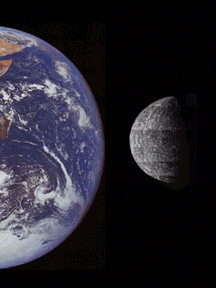
Mercury, the innermost planet in the solar system, is much smaller than Earth,
but the material it is made of is much more dense on average. The table below
gives a comparison of characteristics of Mercury relative to Earth values.
| Characteristic |
Relative to Earth
(Earth = 1) |
Absolute Value |
| Mass |
0.0553 |
3.303 x 10**26 g |
| Radius |
0.382 |
2,439 km |
| Mean Density |
----- |
5.43 g/cm**3 |
| Rotation Period |
58.65 Earth days |
----- |
Mean Orbital
Distance |
0.3871 AU |
57.91 x 10**6 km |
| Orbital Period |
87.9 Earth days |
----- |
Mean Orbital
Velocity |
1.6 |
47.89 km/s
(112,000 mi/hr) |
| Orbital eccentricity |
----- |
0.2056 |
Inclination to
ecliptic (degrees) |
----- |
7.004 |
| Temperature range |
----- |
-360F (-183C) to
840F (450C) |
 Definitions of planetary characteristics
Definitions of planetary characteristics
You might also be interested in:
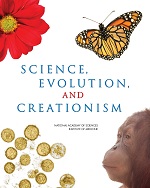
How did life evolve on Earth? The answer to this question can help us understand our past and prepare for our future. Although evolution provides credible and reliable answers, polls show that many people turn away from science, seeking other explanations with which they are more comfortable.
...more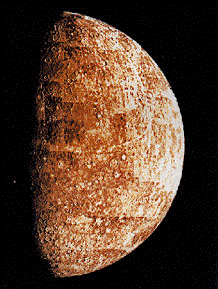
Mercury, the innermost planet of the solar system, is a little bigger than the Earth's Moon. The surface of the planet is covered with craters, like the Moon, but temperatures there can reach over 80
...more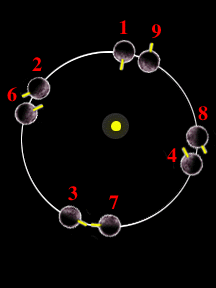
It takes Mercury about 59 Earth days to spin once on its axis (the rotation period), and about 88 Earth days to complete one orbit about the Sun. However, the length of the day on Mercury (sunrise to
...more
Mercury, like the other planets, is believed to have formed in the earliest stage of the evolution of the solar system as dust came together to form even larger clumps and eventually small planets or
...more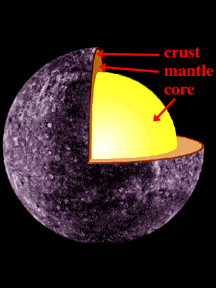
Mercury has a radius of 2439 km (1524 mi), and the metallic iron-nickel core is believed to make up about 75% of this distance. Measurements of the planet's magnetic field made by Mariner 10 as it flew
...more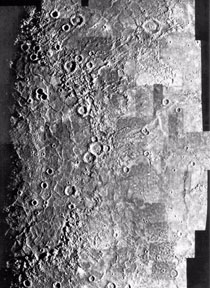
The Caloris Basin is the largest feature on the surface of Mercury. This crater was formed by the impact of a large meteorite near the end of the period of frequent impact cratering in the early solar
...more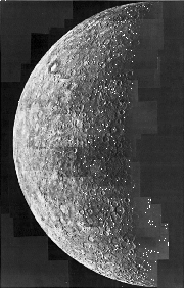
A wide variety of craters ranging in size from 100 meters to 1300 km across can be seen in the Mariner 10 images of Mercury's surface. These include: (1) craters in young terrain, (2) double craters,
...more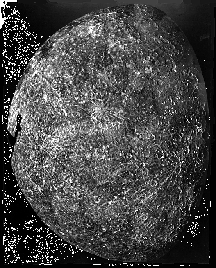
The surface of Mercury has numerous interesting features, including a variety of craters, ridges, and terrains ranging from heavily cratered to nearly crater free. These features, and their distribution
...more















